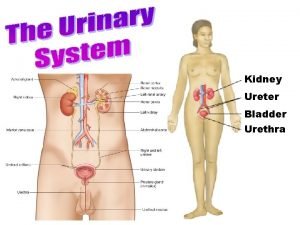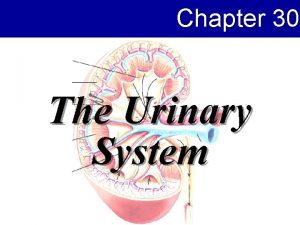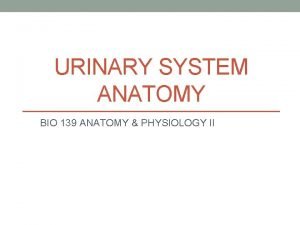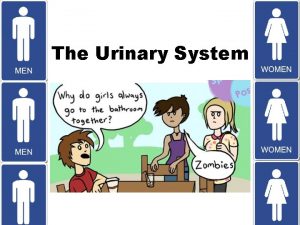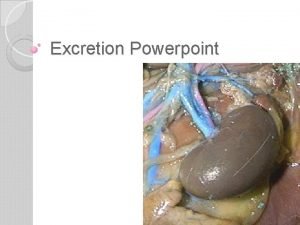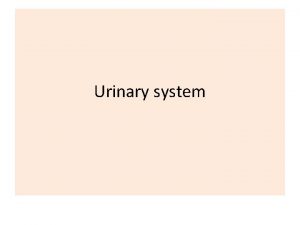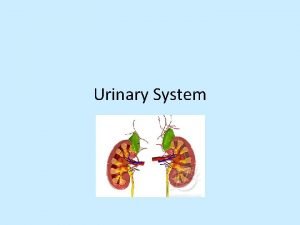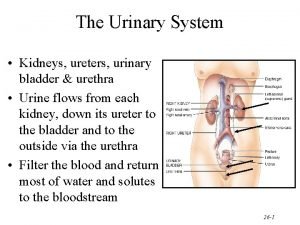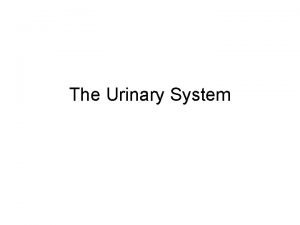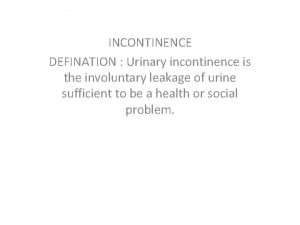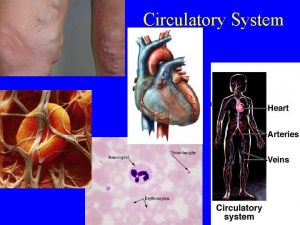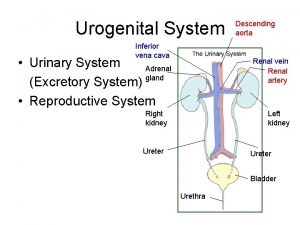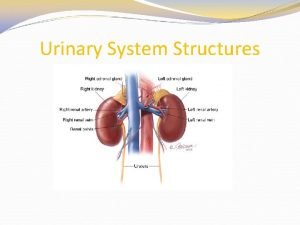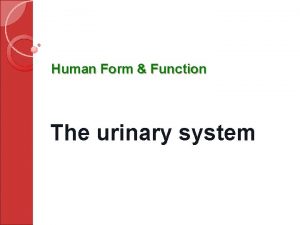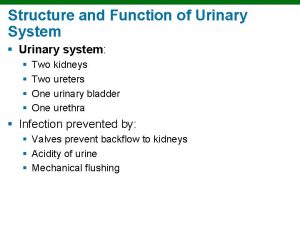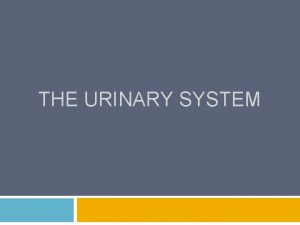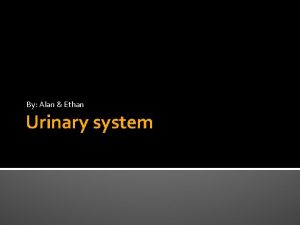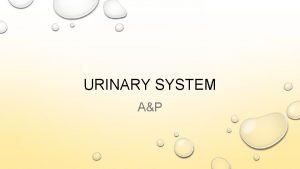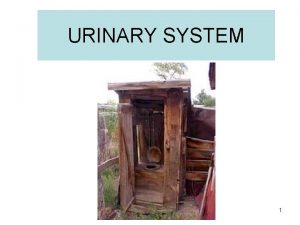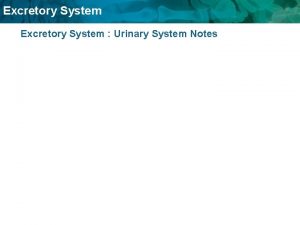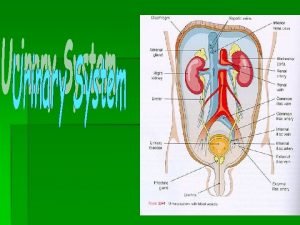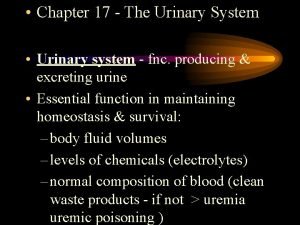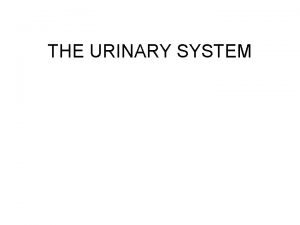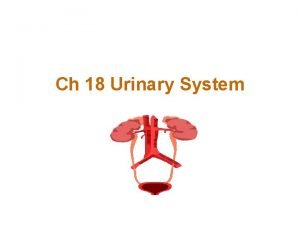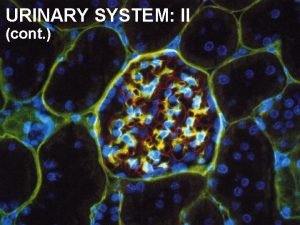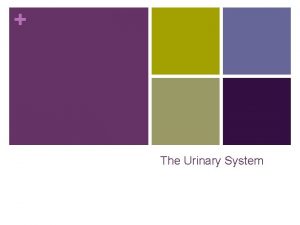URINARY SYSTEM Urinary System n n Function to
























- Slides: 24

URINARY SYSTEM

Urinary System n n Function = to form and eliminate urine Consists of: n Two kidneys n n n n Organs of excretion Regulate body fluids’ composition, volume, and p. H Produce erythropoietin Produce renin Two ureters Urinary bladder Urethra


The Kidneys Located behind peritoneum in lumbar region n Adrenal glands rest on top n Outer region = renal cortex n Inner region = renal medulla n Nephrons: Microscopic working units of kidneys n


Urine Formation n n Blood pressure forces material through glomerular wall and capsule, into nephron Glomerular filtrate consists of: n n n Water Electrolytes Soluble wastes Nutrients Toxins Urea = main waste material (byproduct of protein metabolism)

Urine Formation (con’t) Waste material and toxins need to be eliminated n Water, electrolytes, nutrients returned to blood n Remaining fluid is urine n n Adjusted by pituitary hormone ADH

Removal of Urine n n n Urethra n n Drained from renal pelvis Carried by ureter to urinary bladder before release Expulses urine when bladder muscle contracts Sphincters n n n Regulate urination Upper has involuntary function Lower functions under conscious control


Clinical Aspects of the Urinary System n Infections of urinary tract n n Organisms usually enter through urethra Usually colon bacteria in feces UTI’s more common in females Cystitis produced

Infections (con’t) n Infections of kidney and renal pelvis Pyelonephritis n Symptoms include: n Dysuria n Bacteriuria n Pyuria n n Urethritis Inflammation of urethra n Associated with sexually transmitted diseases n

Glomerulonephritis Inflammation of kidney and glomeruli n Specifically occurs after immunologic reaction n Usually response to infection in another system n Symptoms: n Hypertension n Edema n Oliguria (passage of small amounts of urine) n

Dialysis n Hemodialysis = Cleansing of blood cleansed n n Passed over membrane surrounded by dialysate to remove unwanted substances Peritoneal dialysis = fluids introduced to peritoneal cavity Periodically withdrawn with waste products n Process repeated n

Urinary Stones (calculi) Called urinary lithiasis n Formed of calcium salts n May result from: n Dehydration n Infection n Abnormal urine p. H n Urinary stasis n Metabolic imbalances n

Urinalysis Simple, widely-used diagnosing process n Urine examined and tested for: n Color n Turbidity n Specific gravity n p. H level n Chemical components n Cells, crystals, or casts n









 Lymphatic system
Lymphatic system What is the function of the bladder
What is the function of the bladder Physiology of urine formation
Physiology of urine formation Figure 15-3 is a diagram of the nephron
Figure 15-3 is a diagram of the nephron Urinary bladder combining form
Urinary bladder combining form Interesting facts about urinary system
Interesting facts about urinary system Fetal pig masseter muscle
Fetal pig masseter muscle The urinary system chapter 30
The urinary system chapter 30 Kidney pyramid labeled
Kidney pyramid labeled Chapter 20 urinary/excretory system
Chapter 20 urinary/excretory system Urinary system model
Urinary system model Urinary system model
Urinary system model Osteichthyes
Osteichthyes Urinary system powerpoint
Urinary system powerpoint Urinary system also known as
Urinary system also known as Function of antidiuretic hormone
Function of antidiuretic hormone Urinary bladder
Urinary bladder Normal constituents of urine
Normal constituents of urine Sialography
Sialography Defination of urinary system
Defination of urinary system Urinary system label
Urinary system label Rat urinary system
Rat urinary system Rat urinary system
Rat urinary system Inferior vena cava urinary system
Inferior vena cava urinary system Figure 15-3 the urinary system
Figure 15-3 the urinary system

